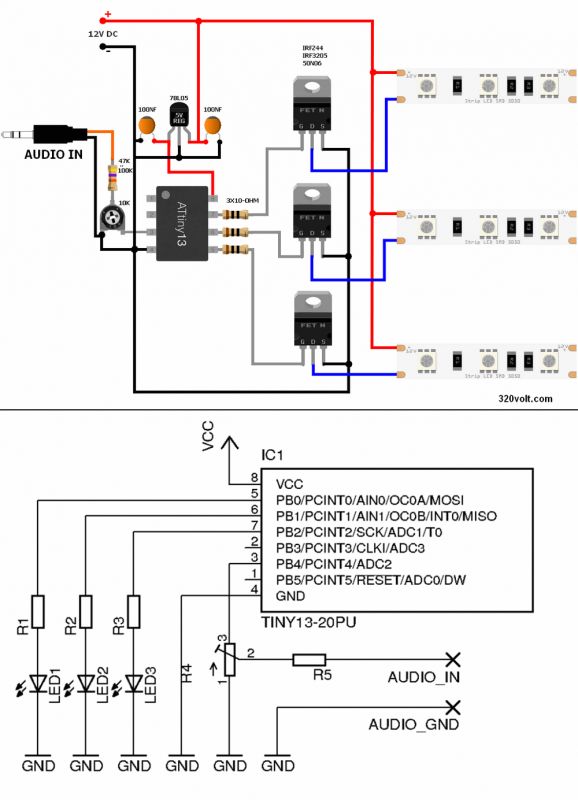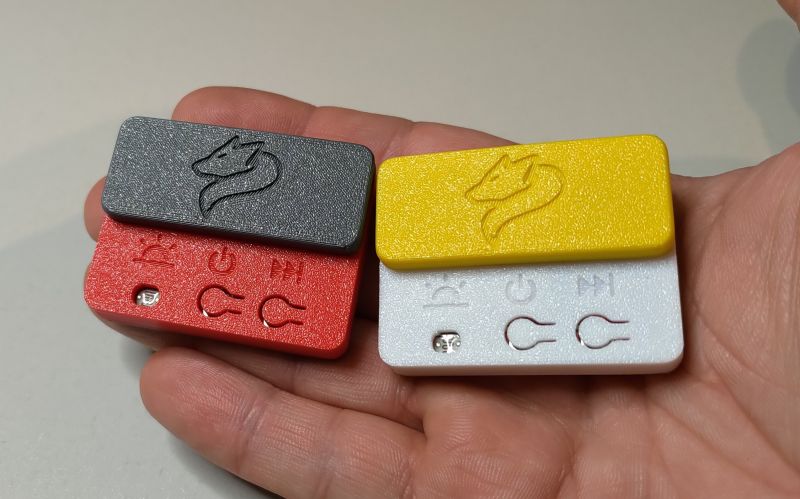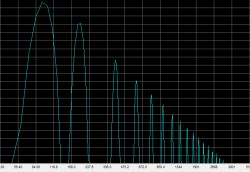Hello,
This experimental project shows how to use ATtiny13 to sync live music and lights with just a few extra components. The design uses a single ADC (analog-to-digital converter) channel for signal acquisition and some DSP (digital signal processing) calculations that separate the three frequency bands in real time and make the LEDs dance in sync with the music. This project also proves that real-time DFT (Discrete Fourier Transformation) is possible on a small MCU like the ATtiny13, which only offers 64B of RAM and 1024B of FLASH memory.
( video; RGB led strip, separate led strip and microphone preamplifier )

file: codes, pcb v1-v2
source; blog.podkalicki.com/attiny13-dance-lights-with-dft/
This experimental project shows how to use ATtiny13 to sync live music and lights with just a few extra components. The design uses a single ADC (analog-to-digital converter) channel for signal acquisition and some DSP (digital signal processing) calculations that separate the three frequency bands in real time and make the LEDs dance in sync with the music. This project also proves that real-time DFT (Discrete Fourier Transformation) is possible on a small MCU like the ATtiny13, which only offers 64B of RAM and 1024B of FLASH memory.
( video; RGB led strip, separate led strip and microphone preamplifier )

file: codes, pcb v1-v2
source; blog.podkalicki.com/attiny13-dance-lights-with-dft/
Cool? Ranking DIY





